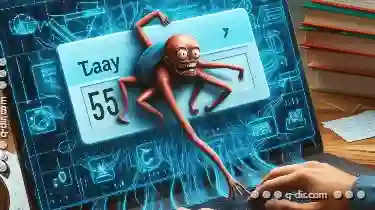" This unwanted behavior involves spending more time than intended on tasks that do not contribute directly to our goals. While there could be various ...
 reasons for this behavior, one significant factor is the pervasive influence of tabs in our online activities. Let's delve deeper into how tabs serve as an enabler for digital procrastination and what role they play in delaying productivity. In today's fast-paced world, where distractions are just a click away and productivity is often pushed to the back burner, many of us have become familiar with the dreaded habit of "digital procrastination.
reasons for this behavior, one significant factor is the pervasive influence of tabs in our online activities. Let's delve deeper into how tabs serve as an enabler for digital procrastination and what role they play in delaying productivity. In today's fast-paced world, where distractions are just a click away and productivity is often pushed to the back burner, many of us have become familiar with the dreaded habit of "digital procrastination.1. Understanding Tabs: What Are They?
2. The Procrastinator’s Dilemma: Why Do We Procrastinate?
3. The Role of Tabs in Procrastination
4. Strategies to Mitigate Tab-Related Procrastination
5. Conclusion
1.) Understanding Tabs: What Are They?
Before we dive into the implications of tabs on procrastination, let’s briefly recap what a tab is. In the context of web browsing, a tab represents an individual window or document within a larger browser interface that allows users to access multiple websites simultaneously. This feature has revolutionized how we consume digital content by enabling multitasking and providing quick access to various resources.
2.) The Procrastinator’s Dilemma: Why Do We Procrastinate?
Procrastination is often driven by factors such as avoidance of tasks that are perceived as unpleasant or difficult, lack of motivation, poor time management skills, or a fear of failure. While these reasons may vary from person to person, one common factor across procrastinators is the habit of seeking immediate gratification instead of tackling long-term goals.
3.) The Role of Tabs in Procrastination
1. Distraction and Impulsive Surfing:
- One of the primary ways tabs contribute to procrastination is through distraction. A single tab can lead to an endless chain of unrelated browsing, from checking social media updates (e.g., Twitter, Facebook) to following links that seem interesting but are not directly related to work or study goals. This impulsive surfing often results in a loss of focus and increased time spent on less important tasks.
2. Indecisiveness:
- Tabs can also exacerbate indecisiveness by allowing users to open multiple windows where they might compare options or research further before making decisions. For instance, while searching for "best practices" in project management, a procrastinator may find themselves exploring unrelated topics like the latest tech trends or amusing cat videos instead of completing their assigned tasks.
3. Proximity Effect:
- The cognitive bias known as proximity effect suggests that once we open a tab, even if it’s not actively being viewed, our brains are more likely to perceive it as accessible and relevant. This perceived availability can lead to subconsciously clicking through various tabs, consuming content without realizing significant time has passed.
4. Multi-tasking Illusion:
- The allure of multitasking often leads people to believe they can effectively manage multiple tasks simultaneously. However, research suggests that humans are not wired for true multitasking and switching between tasks is less efficient than working on one task at a time. Tabs facilitate this illusion by allowing users to maintain the appearance of productivity while their attention drifts across various windows.
4.) Strategies to Mitigate Tab-Related Procrastination
1. Set Time Limits:
- Implementing strict time limits for each browsing session can help control impulsive and excessive tab usage. Tools like StayFocusd or Cold Turkey can be effective in limiting the amount of time spent on certain websites.
2. Use Browser Extensions:
- Utilize browser extensions that block distracting sites during work hours, such as Freedom or LeechBlock. These tools help limit access to time-wasting websites and redirect focus back to tasks at hand.
3. Mindful Browsing:
- Cultivate a mindful approach to browsing by setting clear intentions for each session and being aware of how tabs can lead to unplanned distractions. This self-awareness helps in making more intentional decisions about when and what to browse.
4. Routine and Structure:
- Establish routines that include specific times for work, breaks, and leisure browsing. A consistent schedule can help manage expectations and reduce the temptation to endlessly scroll through tabs during designated work hours.
5.) Conclusion
While tabs have undoubtedly made web navigation more efficient, they also pose a significant challenge to those looking to maintain focus and productivity. By understanding how tabs contribute to procrastination, individuals can employ strategies that mitigate their negative effects and harness the benefits of this powerful tool in a productive manner. Embracing self-discipline and creative time management techniques will not only enhance personal efficiency but also foster a more balanced digital lifestyle.

The Autor: / 0 2025-05-25
Read also!
Page-

The Psychology Behind Single-Pane Efficiency
One popular design layout for applications and websites is the single-pane view. This blog post will delve into the psychology behind the efficiency ...read more

The Evolution of Details View in File Explorers
They help us navigate through files and folders, manage documents, images, videos, and other data stored on our devices. Among the various views ...read more

Log File Growth: Managing Disk Space
Whether you are a computer science student, a system administrator, or simply someone who deals with digital data regularly, understanding how to ...read more